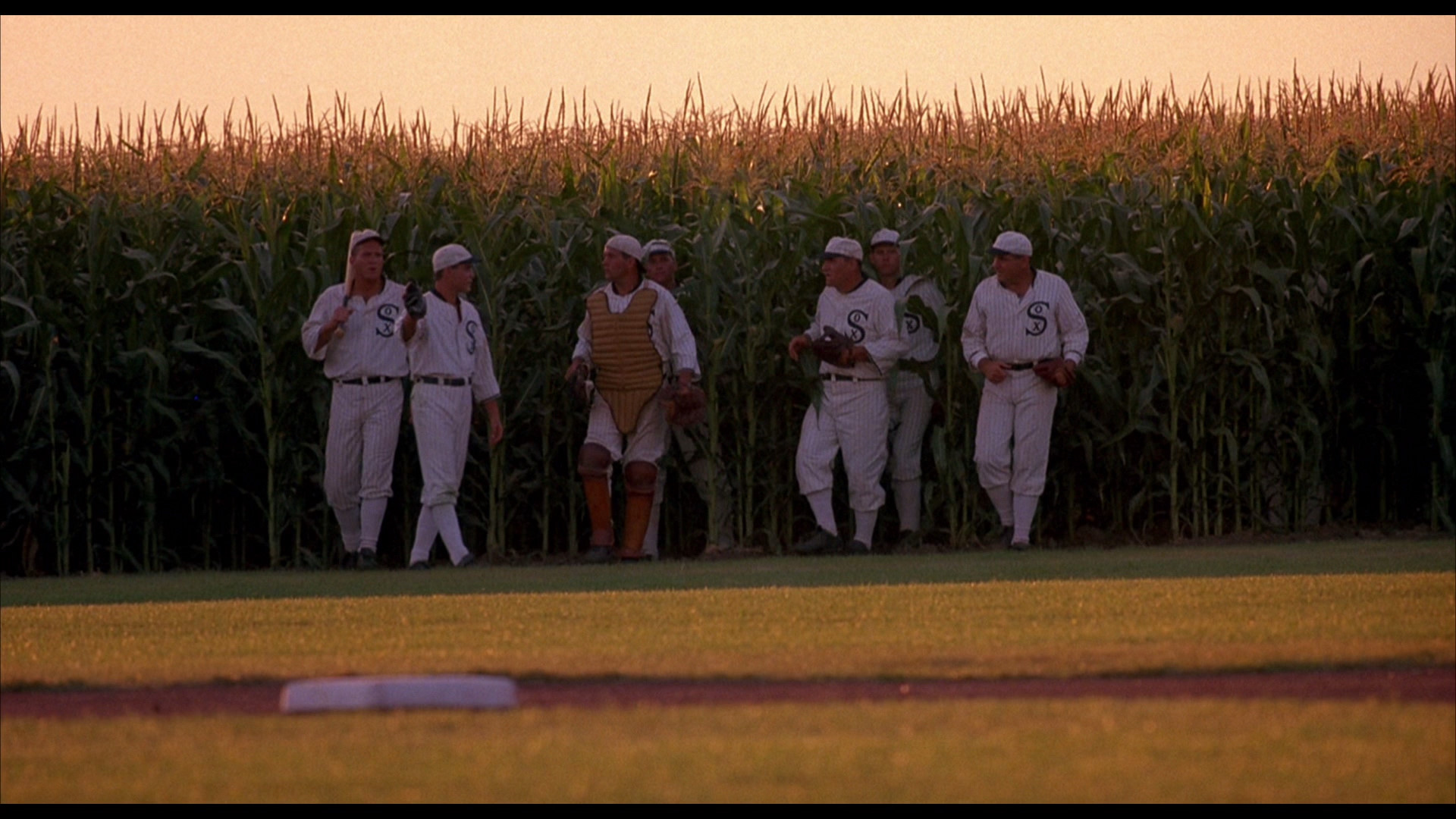Sometimes you can get a little too much sun, basking in the glory of building your brand. So much so, that you start hearing voices telling you “If you build it, they will come.”
That line may have worked for Kevin Costner’s character in Field of Dreams, but advice like that can prove disastrous for a brand start-up. Great brands work to a process, to create both sales and success…
It’s got to be said. Field of Dreams lied to us.
Why? The voice that spoke to Ray Kinsella and told him to carve that dang baseball diamond from his head-high cornfield left something out. Yes, the tiny tidbit missing was, “If you build it, they will come. But it’s gonna take some effort to get them here.”
In the movie, the ghosts of great players miraculously emerged from the cornfield to play ball on Ray’s field, but that sadly doesn’t happen in the real world. Your customers won’t appear out of thin air.
The truth is, today you can’t just sit back and wait … for things to happen.
Even though you may see yourself and your brand as visionary — along with movie-worthy intentions and dreams — it’s rare that your vision includes your brand being poised for success, with an audience bursting out of nowhere.
You need a process.
Is this heaven?
‘Shoeless’ Joe Jackson asked the very same question after playing ball for the first time on Ray’s field. He thought it was too good to be true to be playing ball again, after being banned from playing the game he loved.
Now it’s no secret that Major League Baseball players like Shoeless Joe can hit, catch and throw far better than the rest of us, but those abilities don’t just come from their above-average physical prowess. Ninety percent of what you see is mental.
Successful major leaguers think — by strategising and planning — their way to baseball brilliance. And that’s exactly what you need to do with your brand.
AIDA: Hit a home run
One of the oldest — and perhaps the most simplistic — founding principles used across both sales and marketing, is AIDA.
By using it as a guiding rule in all your brand activities, you’ll develop effective communications that talk directly to your customers’ needs and desires, and provokes them into buying.
Working on the ‘hierarchy of effect’ approach, AIDA is grounded in the belief that to be effective and achieve the desired response — a sale — four successive steps have to be completed and passed. Any piece of persuasive communication about your brand must carry your customer through those four steps, and each step cannot be reached until the previous one is completed.
Outlining of the four-stage process travelled by a customer, AIDA describes:
A = Attention — Capture a customer’s attention — This is an educational phase.
I = Interest — Stimulate their interest to learn more — This is an exploratory phase.
D = Desire — Create a desire for the product or brand — This is a feeling phase.
A = Action — Acting on their desire and knowledge, they buy the product — This is a doing phase.
I’m sure you’re thinking … that’s great. Nice to know. But would you also like to know how to use it to get your products off the shelf?
Great. Let’s play ball…
Attention: Build the field
In our media-filled world, you don’t need to go to the extreme of building a baseball diamond in Iowa. Instead you need to be quick and direct to grab people’s attention.
It’s simple: You can’t buy what you don’t know about.
One approach to attracting attention is called disruption. It’s a technique that literally jars customers into paying attention. It can be done in many ways, including:
- Location — placing ads in unexpected situations. This is often called guerrilla or ambient media.
- Shock factor — this can be done in many ways. A common method is by using provocative imagery or wording. However, whatever you do it should honestly reflect your brand image and positioning – don’t downgrade your brand for the sake of attention.
- Personalisation — it’s hard to ignore something if it’s specifically aimed at you. Imagine reading a newspaper ad and seeing your name in the headline. Wouldn’t you read on?
Whatever methods you choose to attract attention and build awareness, your aim is to cut-thru the clutter and get customers to keep reading what you have to say about your brand.
Interest: Watching from the dugout
A baseball field does not maketh a game. Gaining people’s real interest in your brand is a deeper process that requires more effort than just attention-seeking activities. You want them, to want, to learn more — to get into the game, with you.
This is possibly the most challenging stage of the process. You need to engage your customers so that they’ll spend their precious time to gain a greater understanding of your message (and product).
They’ll grant you a little time to do that, but to be successful you need to stay totally focused on their needs. That means you must help them quickly find the messages that are relevant to them.
Ways to help them quickly gather information and learn more are:
- Use bullet points and subheadings
- Break up your text to make your key points stand out
- Clearly show them (not tell) who your customer is
- Show what your product offers them
One of the best ways to create engagement is to know your target customer, like you do yourself. Walk in their shoes (sorry Joe). Think about what it is that they’re interested in — say if they were a beauty salon customer:
- Is it reducing the signs of fine lines?
- Is it covering those first few tell-tale grey hairs?
- How does your product deliver their desired result?
- What other benefits does your product give them?
- Does your product achieve this?
Once you know what they want, make sure your brand messages answer those questions.
Desire: The thrill of the game
Shoeless Joe loved baseball. “Man, I did love this game. I’d have played for food money. It was the game… The sounds, the smells … Shoot, I’d play for nothing!”
But there’s a huge difference between being interested in something (a watcher) and desiring it (a player). You need to convert their interest into a desire for what you’re offering. You need to make them feel something.
This can be achieved by engaging their emotions, because people rarely buy without some associated emotional benefit.
How? By turning your story into one that’s not only relevant, but also irresistible.
Think and show how your product makes them feel … how they’ll look, what specific change or benefit they’ll achieve. The infomercial format does this exceptionally well, because they layer on facts and mix in some character and persuasiveness, until your customer has only one conclusion … “I have to get this. I’m amazed I’ve been able to live without it for so long!”
It’s worth noting that the Interest and Desire parts of AIDA go hand-in-hand — they’re inseparable Siamese twins. As you’re building interest, you also need to your customers to understand how your offering helps them, in a real way.
Action: Make it to home plate
All his life, Ray Kinsella was searching for his dreams. Then one day his dreams came looking for him, through a voice. It told him to do something.
Now that doesn’t mean you’ll start hearing voices about your brand … but you do need to do something. And frankly, it’s the most important job of all — you need to close the sale.
In messaging, it’s called the ‘Call to Action (CTA).’ You don’t have to be blatant, but you must, must, must ask them to buy, call, enquire, download, subscribe, sample, refer —anything that gets them out of their chairs and into doing-mode.
So how do you persuade your customer to take that final step? Too often brands resort to price at this stage and in doing so, they undervalue their offering. Instead, greater success is achieved by adding value. How can you do that?
- GWP (gift with purchase)
- A pack with added value
- Bonus sizes
- Sampling campaigns or trial sizes
Once you’ve added value, you then need to add the final component to the recipe —scarcity. Limited (time or quantity) offers are CTA devices that add greater power your offer and can entice customers to take action now, rather than later.
The place where dreams come true
I must be honest. In my opinion, AIDA is the almost fail-proof road map to great brand ads and communication pieces — ones that work.
Similarly, somehow Ray knew that his field would work. He knew that people would come for reasons they couldn’t even fathom: “They’ll pass over the money without even thinking about it: for it is money they have and peace they lack … And they’ll watch the game and it’ll be as if they dipped themselves in magic waters. The memories will be so thick they’ll have to brush them away from their faces.”
Ultimately, just like Ray’s diamond, AIDA is invaluable for just one reason: it forces you to focus on your customers and not on your business. It makes you answer (on their behalf) the eternal question: “What’s in it for me?”
NOTE: This post originally appeared as an article ghostwritten for a client and published in Professional Beauty (Aust) magazine.

